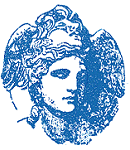

|
Zsuzsanna Biró: The Role of Readings in German Language Courses in Secondary Education in Late Nineteenth Century Hungary The present study attempts to link two different approaches, the history of methodology and the history of school subjects. In the history of methodology, taxonomies are related to one of the elements shared by different practices. In the history of school subjects, however, research focuses on the social, educational and historical context and only addresses the techniques and practices of teaching in this sense. The history of methodology is especially insensitive to country-specific differences in educational and cultural policies and the underlying factors shaping instruction are not scrutinised. The present enquiry addresses the methods of German language instruction in secondary education in the territory of the former Hungarian Kingdom in the late 19th century and argues that the apparent transformations had three sources: the needs of educational policy, the needs of the emerging middle class and changes in the theory of education which could be called the Herbartian shift. One of the significant results of the reform in German language instruction in the period was that the grammar-translation method, increasingly alienated from the language taught, was substituted by the reading-centred method, focusing on literacy. The changes are traced through analyses of contemporary educational documents (course plans, methodological instructions, etc.). Special attention is paid to course requirements in secondary schools from the period between 1879 and 1899, when Mór Kármán attempted to reform Hungarian secondary education by adapting the ideas of Herbart and Ziller. The instruction promoted by Kármán stressed the salient role of key readings, its primary innovation being the focus on the process of understanding the structure and content of the text instead of systematising and applying the accumulated knowledge of grammar. By the beginning of the 20th century, readings had ceased to serve as mere texts of information; they also became linguistically salient and were seen as enhancing access to the culture beyond them. This resulted in a transformation of content: readings became simpler and more modern in their lexicon, that is, they approximated the literary style of the time, and later everyday discourse. New types of exercises also appeared, e.g. discussions about the readings, questions, text modifications, dialogues, etc. The direct method did not become dominant in Hungary. Some of its elements, especially those employed in the first two years, were incorporated into the Hungarian system of language teaching in secondary education, then the leading role of readings in the entire system of language teaching was re-established. The resulting method was called intermediating teaching, a very accurate description in two respects. First, because it played a mediating role between the grammar-translation method and the direct method; second, because it incorporated the practices meant to mediate the culture through the foreign language. Thus reading in the foreign language became a factor linking the traditional educational values to innovations for satisfying modern expectations. MAGYAR PEDAGÓGIA 104. Number 2. 143-164. (2004) Levelezési cím / Address for correspondence: Biró Zsuzsanna Hanna, H–1024 Budapest, Margit krt. 64a |
| ||||||||||||||||||||||||||||||||||||||||||||||||||||||||||||||||||||||||||||||||||||||||||||||||||||||||||||||||||||||||||||||||||||||||||||||||||||||||||||||||||||||||||||||||||||||||||||||||

 PDF
PDF